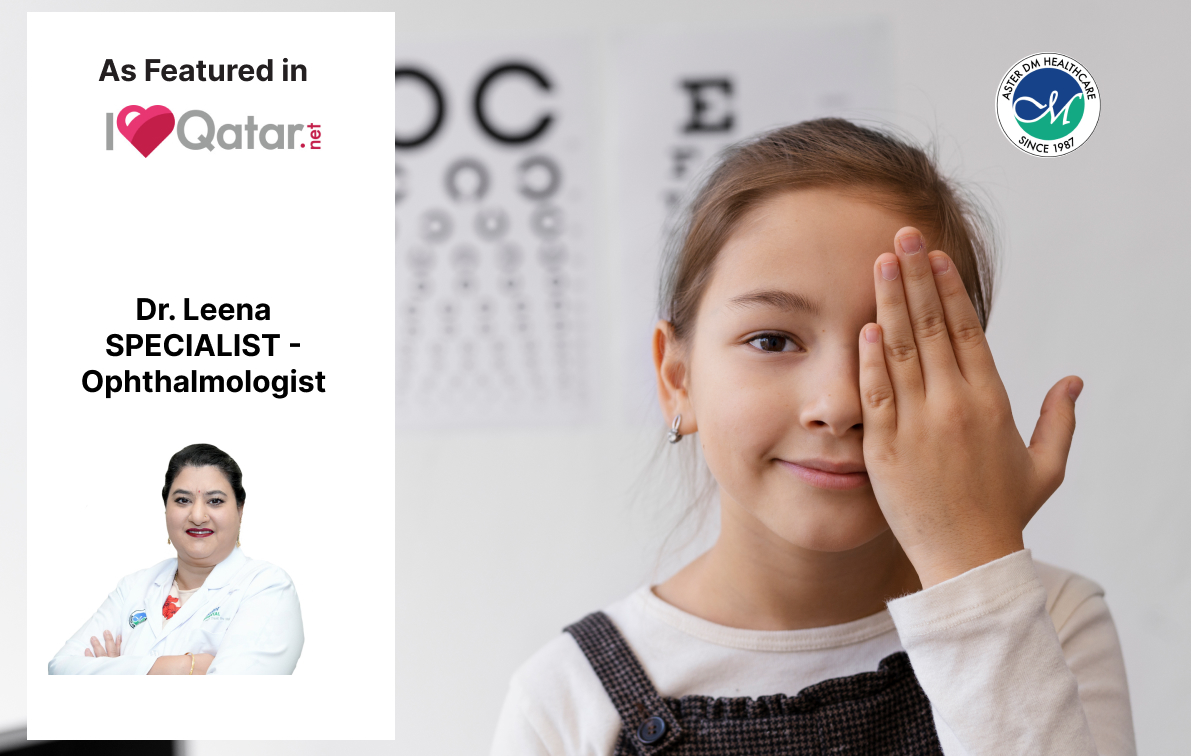Vision screening in children is a crucial aspect of pediatric healthcare. Early detection of vision problems can prevent long-term issues that may affect a child's development and academic performance. The importance of vision screening, common methods used, and guidelines for parents and healthcare providers are explained below.
[As published in I love Qatar.net]
Why Vision Screening is Important?
Children often don't realize when they have vision problems. Developmental delays, learning difficulties, and even permanent vision loss can occur if early vision issues are left untreated. When common conditions like amblyopia (lazy eye), squint (cross eye), and refractive errors (such as myopia, hyperopia, and astigmatism) are detected early, they can be treated.
When Should Vision Screening Occur?
The American Academy of Pediatrics (AAP) recommends vision screening at the following stages:
· Newborn to 3 months: A basic eye health check, looking for signs of congenital issues.
· 6 months to 1 year: A more detailed examination to check for eye alignment and visual acuity.
· 3 to 5 years: Formal vision screening using age-appropriate tests.
· Annually after 5 years: Regular vision checks to be done during annual pediatric visits. Myopia is the most prevalent issue in this age group and can typically be corrected with eyeglasses.
Common Vision Screening Methods
1. Newborn Eye Exam: This involves checking the red reflex with an ophthalmoscope to rule out serious congenital issues like cataracts or retinoblastoma.
2. Fixation and Following: For infants, the ability to focus on and follow a moving object is observed.
3. Corneal Light Reflex (Hirschberg Test): This test helps to detect strabismus/cross-eye by shining a light in the eyes and observing the reflection on the cornea.
4. Cover Test: The cover test detects strabismus by covering one eye and watching for movement in the uncovered eye.
5. Visual Acuity Tests: For preschoolers, tests like the Kay’s picture cards or Cardiff Cards are used, which are designed for children who cannot yet read.
6. Photoscreening: This technique uses a camera-like device to take images of the child's eyes and identify risk factors for amblyopia (lazy eye) or other vision problems.
Interpreting the Results
Vision screening is a tool to identify children who need a more comprehensive eye exam by an optometrist or ophthalmologist. If a problem is suspected during a screening, a referral to a specialist is essential for further evaluation and treatment.
Parental Role in Vision Screening
Parents should be proactive in observing their child’s vision. Signs of potential vision issues include squinting, sitting too close to the TV, frequent eye rubbing, or complaints of headaches. Regular check-ups should be maintained, especially if there is a family history of vision problems.
Importance of Routine Eye Examinations
Even if none of the above risk factors are present, a routine eye examination is recommended. This is crucial because many children may have reduced vision in one or both eyes without being aware of it. Such issues often become apparent only when a child is asked to cover one eye and read an eye chart, as done in an eye clinic.
Conclusion
Vision screening in children is vital for early detection and treatment of vision issues that can affect a child's overall development. By following recommended guidelines and being vigilant, parents and healthcare providers can ensure that children have the best opportunity for clear and healthy vision.
